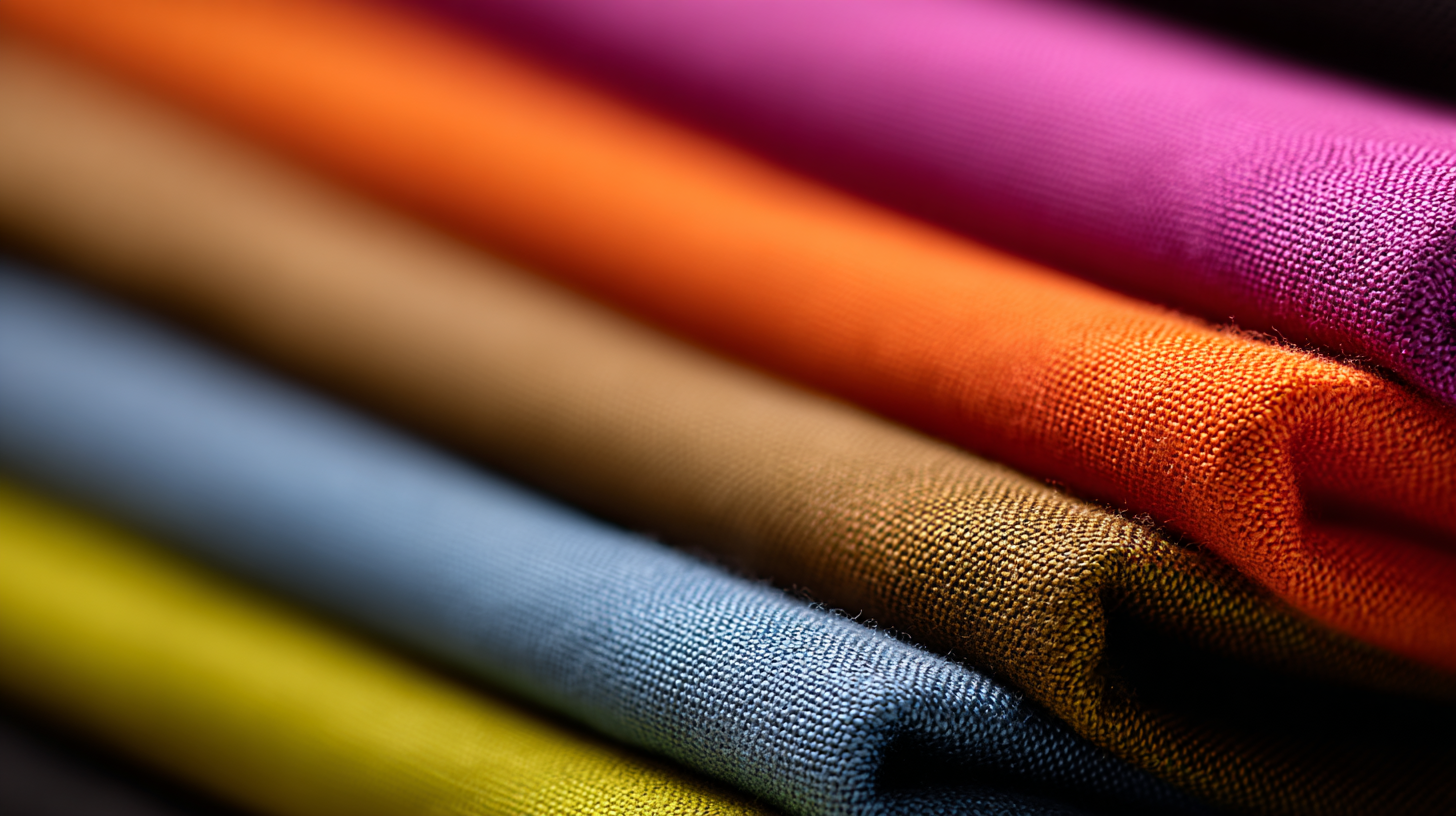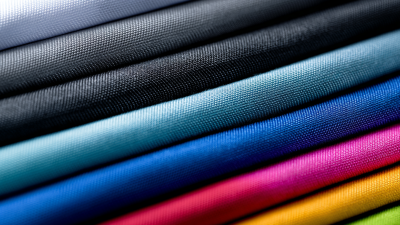- +86 13957580925
- 510515850@qq.com
- adela0928@163.com
Selecting the appropriate Polyester Terylene for textile applications is crucial for achieving desired performance and sustainability in fabric production. Polyester Terylene, known for its strength, durability, and resistance to shrinking and stretching, has become a staple in the textile industry. According to the International Textile Manufacturers Federation, polyester accounts for over 50% of the global fiber market, highlighting its dominance. The diverse applications of Polyester Terylene across apparel, home textiles, and industrial fabrics underscore the importance of selecting the right type to meet specific requirements. Recent advancements in production technology have led to variations in Polyester Terylene that cater to eco-conscious consumers, as reported by the Sustainable Apparel Coalition, which states that sustainable textiles are projected to grow at a CAGR of 11% through 2025. Thus, understanding the different grades and properties of Polyester Terylene is essential for manufacturers and consumers alike to ensure optimal functionality, aesthetic appeal, and environmental compliance.

When choosing the right polyester terylene for your textile needs, it's essential to understand the variety of options available in the market today. With a significant focus on sustainability, different types of polyester, including both virgin and recycled forms, have gained attention for their specific properties and environmental impacts. Research has shown that fabrics made from recycled polyester can help in reducing the release of microplastic fibers, a growing concern in the realm of environmental pollution. This highlights the importance of selecting polyester types that contribute to eco-friendly practices.

When selecting the right polyester terylene for your textile needs, several key factors must be carefully evaluated. First, consider the fiber's durability. According to a report by Grand View Research, the global polyester market size is expected to reach USD 80.4 billion by 2025, driven by the fiber's inherent strength and resistance to abrasion. This makes polyester terylene an ideal choice for various applications, particularly in the apparel and home textiles sectors where performance durability is crucial.
Another critical aspect is the fabric's moisture-wicking properties. A study published by the Textile Research Journal highlights that polyester terylene can effectively manage moisture, keeping the wearer dry and comfortable. This characteristic is especially valuable in activewear and sports textiles, where moisture management can significantly enhance user experience. Additionally, fabric weight and texture should be assessed based on the intended use; lighter weights may be preferable for summer clothing, while heavier options could suit outerwear or upholstery. By considering these factors, you can choose the most suitable polyester terylene for your specific textile project, ensuring optimal performance and satisfaction.
This chart depicts the importance ratings of key factors to consider when selecting polyester terylene for your textile needs. A higher rating indicates greater importance in decision-making.
When selecting the right polyester terylene for your textile needs, it's essential to consider both price points and quality standards. Polyester terylene fabrics can vary significantly in terms of their manufacturing processes, durability, and intended use, making it critical to perform thorough comparisons. Opting for lower-priced options may save money upfront, but they can often fall short in terms of performance and longevity. Therefore, understanding the value of each product is paramount.
Tips: Always check for certifications that validate the quality of the fabric you are considering. This can give insight into its environmental impact and durability. Also, compare different retailers to find the best balance of quality and cost.
Additionally, keep in mind the specific applications of polyester terylene. Whether you’re looking for fabrics for sportswear, home decor, or industrial applications, each category may have different quality benchmarks. Evaluating reviews and performance tests of similar products can help streamline your choice.
Tips: Look for user feedback on fabric performance over time. This can often reveal insights beyond technical specifications, giving you a clearer picture of how the textile will hold up in real-life scenarios.
| Fabric Type | Price per Yard | Weight (GSM) | Durability Rating | Uses |
|---|---|---|---|---|
| Standard Polyester | $2.50 | 150 | Good | Clothing, Linings |
| Microfiber Polyester | $4.00 | 200 | Excellent | Activewear, Upholstery |
| Polyester Spandex Blend | $3.50 | 180 | Very Good | Activewear, Sportswear |
| High-Denier Polyester | $5.00 | 300 | Exceptional | Outdoor Gear, Bags |
| Recycled Polyester | $3.00 | 160 | Good | Sustainable Fashion |
When selecting the right polyester terylene for your textile needs, it’s essential to assess the durability and performance characteristics that align with your intended application. Polyester terylene is known for its excellent strength, resistance to stretching and shrinking, and high durability, making it a popular choice in various textile markets. The global textile market is projected to value $982.67 billion in 2024, with a compound annual growth rate (CAGR) of 4.7% through 2032, indicating a robust demand for high-performing materials like polyester terylene.
**Tips:** Consider the specific requirements of your project, such as abrasion resistance, moisture-wicking properties, and colorfastness. Performing a comparative analysis based on testing standards within your industry can help identify the best polyester terylene options.
Another aspect to consider is the environmental impact and sustainability of the polyester terylene you choose. Many manufacturers are shifting towards recycled options, responding to the growing demand for eco-friendly textiles. By prioritizing sustainable choices, you not only enhance your product offerings but also align with consumer trends favoring environmentally responsible materials.
When selecting polyester terylene for your textile projects, understanding its versatility is key. This synthetic fiber is renowned for its durability, resistance to wrinkling, and ease of care, making it suitable for various applications. To effectively utilize polyester terylene, it’s important to consider the specific requirements of your textile product.

Tip 1: For apparel, choose a lightweight polyester terylene blend to enhance breathability while maintaining shape and form. It is particularly beneficial for activewear, as it wicks moisture away while providing flexibility.
Tip 2: In home textiles, such as curtains and upholstery, opt for a heavier weight polyester terylene. This not only adds to the fabric's durability but also offers better drape and structure, ensuring that your home furnishings will withstand daily wear and tear.
Tip 3: If you’re crafting items that require vibrant colors or intricate prints, polyester terylene’s excellent dyeing properties make it an ideal choice. It holds color well, resulting in long-lasting and visually appealing products.






